Early Modern Natural History & Medicine by José Pardo-Tomás
Journal of the History of Collections, 2020
I cinque libri delle piante of Pier'Antonio Michiel (1510-1576) are kept in the Biblioteca Marcia... more I cinque libri delle piante of Pier'Antonio Michiel (1510-1576) are kept in the Biblioteca Marciana in Venice. Eleven of the 1,028 plant drawings contained in their five volumes stand out for their notable stylistic differences from the rest. The authors advance the hypothesis that these eleven drawings derive from the work of indigenous scribe-artists in the Valley of Mexico. In tracing the various series of copies of them that circulated between New Spain, the Iberian peninsula and Italy, they highlight the important role played in the production and transportation of copies by Marcantonio Da Mula (1506-1572), and suggest the Spanish nobleman Diego Hurtado de Mendoza (c.1503-1575) as the link between the Spanish court and Michiel's native Venice.
L'admirable greffier de nature. Héritages botaniques et zoologiques de Pline au XVIe siècle, Dominique Brancher, ed. , 2023
by librairie droz s.a., 11, rue massot, genève. ce fichier électronique est un tiré à part. Il ne... more by librairie droz s.a., 11, rue massot, genève. ce fichier électronique est un tiré à part. Il ne peut en aucun cas être modifié. l' (les) auteur (s) de ce document a/ont l'autorisation d'en diffuser vingt-cinq exemplaires dans le cadre d'une utilisation personnelle ou à destination exclusive des membres (étudiants et chercheurs) de leur institution. Il n'est pas permis de mettre ce pdF à disposition sur Internet, de le vendre ou de le diffuser sans autorisation écrite de l'éditeur.
Utopismos circulares. Contextos amerindios de la modernidad, Julián García López y Óscar Muñoz Morán, eds., 2021
Madrid-Francfurt, Iberoamericana-Vervuert, pp. .
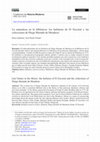
Cuadernos de Historia Moderna, 48 /1: pp. 37-56, 2023
[Text in Spanish] The re-discovery of Diego Hurtado de Mendoza’s herbaria in the Library of El Es... more [Text in Spanish] The re-discovery of Diego Hurtado de Mendoza’s herbaria in the Library of El Escorial allows us to offer a somewhat different look at the library of this aristocrat, diplomat, collector and poet from Granada. As his library passed into the hands of Felipe II when Mendoza died in 1575, the herbaria were incorporated into the whole cultural, political and artistic program of the Royal monas- tery-palace-mausoleum. This paper aims to propose a new look to these herbaria within the two cultural contexts in which they lived. Both based, not only in the Mendoza’s library as a space of constructing knowledge about the natural world, but also playing different roles inside a library which had moved between Italy (Venice, Trent, Padua, Bologna, Rome) and Spain (Granada, Madrid, El Escorial) over four decisive decades for the future of the Catholic Monarchy.
Pensar la medicina amb la història. Homentage a la Professora Maria José Báguena Cervellera, Carmel Ferragud i José Ramón Bertomeu, eds. València, Publicacions de la Universitat de València, pp. 37-51. , 2023
[Text of the article in Catalan] The paper is an approach to the history of the avocado in Europe... more [Text of the article in Catalan] The paper is an approach to the history of the avocado in Europe, in particular, in the context of the exchanges between naturalists of the Republic of Letters, from the mid-sixteenth century to the mid-eighteenth century. In those two centuries, the presence of avocado trees in the hands of the Franciscans in the city of Valencia acted as a focus of attraction for travellers interested in materia medica and natural history: Clusius, Tournefort, Jussieu ... Little-known or unpublished archival sources from the Gabinete Salvador in Barcelona and the Muséum d'Histoire Naturelle in Paris are provided.
en Angélica Morales, Cynthia Radding, Jaime Marroquín, eds. Los saberes jesuitas en la primera gl... more en Angélica Morales, Cynthia Radding, Jaime Marroquín, eds. Los saberes jesuitas en la primera globalización (siglos XVI-XVIII), México, Siglo XXI-CEIICH UNAM, pp. 56-97.
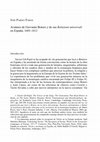
Un mondo di Relazioni. Giovanni Botero e i saperi nella Roma del Cinquecento, E. Andretta, R. Descendre & A. Romano, eds. , Roma, Viella, 2021: pp. 279-316. , 2021
Este capítulo se propone situar el foco no en esa generación que leyó a Botero de la que habló G... more Este capítulo se propone situar el foco no en esa generación que leyó a Botero de la que habló Gil-Pujol (2017), sino en la inmediatamente anterior, rigurosamente coetánea de Botero. La generación que comenzó realmente a leerlo, porque fue la que lo tradujo y lo editó en España. Así es que el foco de nuestro interés se ubica en los años finales del reinado de Felipe II y los primeros años del reinado de Felipe III. En esa coyuntura específica, el capítulo se ocupa de la producción y recepción de las Relazioni universali, de los dos programas editoriales diferenciados que las tradujeron, pero también de la reelaboración o ampliación que Botero escribió durante o como consecuencia de su estancia en España, en la corte de Felipe III como instructor de los príncipes saboyanos.
Journal of the History of Collections, 2020
I cinque Iibri delle piante of Pie r'Antonio Michiel (1510-1576) are kept in the
Biblioteca Marri... more I cinque Iibri delle piante of Pie r'Antonio Michiel (1510-1576) are kept in the
Biblioteca Marriana in Venice. Eleven of the 1,028 plant drawings contained in their
five volumes stand out for their notable stylistic differences from the rest. The
authors advance the hypothesis that these eleven drawings derive/ram the work of
indigenous scribe-artists in the Valley of Mexico. In tracing the various series of
copies of them that circulated between New Spain, the Iberian peninsula and Italy,
they highlight the important role played in the production and transportation of
copies by Marcantonio Da Mula (1506-1572), and suggest the Spanish nobleman
Diego Hurtado de Mendoza (c.1503 - 1575) as the link between the Spanish court and
Michiel's native Venice.

History of Science, 2019
This article sets out to throw light on the intellectual and scientific activities of a group of ... more This article sets out to throw light on the intellectual and scientific activities of a group of Spanish humanists associated with the diplomat, aristocrat, and writer Diego Hurtado de Mendoza in the course of his fifteen years in Venice, Trent, and Rome, focusing on two aspects that have been neglected to date. These are (a) the integration of practices connected with the study of nature (herborizing expeditions and the production of herbaria) with the work of collating, translating, and commenting on classical texts dealing with natural history and materia medica; and (b) the insertion of these scientific activities in Italy by the Spanish subjects of the Emperor Charles V within the broader context of a specific cultural policy. This policy would later be fleshed out in the scientific project of the Spanish Crown under Philip II, inseparable as it was from the monarch’s political and religious policy.
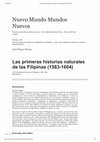
Nuevo Mundo Mundos Nuevos [On line], 2019
The paper is based on the hypothesis that the Philippines was a territory colonized from New Spai... more The paper is based on the hypothesis that the Philippines was a territory colonized from New Spain and served as experience, accumulation, memory and practice for other spaces colonized from New Spain, mainly the North of Mexico and California. Although the Jesuits hegemonized the missionary-colonizing voice in those territories (the Philippines first, then the North), there were precedent ways of writing the natural history that the Jesuits knew, learned and, finally, appropriated and adapted. The paper presents one of the first attempts of writing the natural history of the Philippines, Antonio de Morga's Sucesos de las Islas Filipinas – published in Mexico, in 1609, but written between 1595 and 1603 – to compare it with the first natural history of the Philippines produced by a Jesuit, Pedro Chirino, published in Rome, in 1604.
El trabajo parte de la hipótesis de que el archipiélago de las Filipinas, territorio colonizado desde la Nueva España, sirvió de experiencia, acúmulo, memoria y práctica para la colonización novohispana de otros territorios, señaladamente el Septentrión y las Californias. Si bien los jesuitas hegemonizaron la voz misional-colonizadora en esos territorios (Filipinas primero, el Norte después), antes hubo otros estilos, formas y maneras de escribir la historia natural que los jesuitas conocieron, aprendieron y, finalmente, se apropiaron y adaptaron. Trataremos de analizar uno de los primeros textos que plantean una forma de escribir la historia natural de las Filipinas, Sucesos de las Islas Filipinas, de Antonio de Morga (publicada en México, en 1609, pero escrita entre 1595 y 1603) para compararla con la primera historia natural de las Filipinas hecha por un jesuita, la de Pedro Chirino, publicada en Roma, en 1604.
Connecting Worlds: Production and Circulation of Knowledge in the First Global Age, eds. Amélia P... more Connecting Worlds: Production and Circulation of Knowledge in the First Global Age, eds. Amélia Polónia, Fabiano Bracht & Gisele C. Conceição. Cambridge Scholars Publishing, 2018, pp. 154-182.
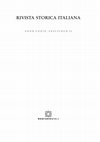
Andretta, Elisa; Pardo-Tomás, José
RIVISTA STORICA ITALIANA, 129 (2) 2017: 417-456
Abstract: In 1... more Andretta, Elisa; Pardo-Tomás, José
RIVISTA STORICA ITALIANA, 129 (2) 2017: 417-456
Abstract: In 1555 Spanish physician and naturalist Andres Laguna (1511?-1559) published his commented Spanish translation of Disocoride's Materia medica which he addressed to prince Philip who was about to be crowned King of Spain. The work quickly became an essential reference, even outside Spain, and contributed to the circulation of natural and medical knowledge in the late Renaissance while being reissued numerous times. Starting from an examination of the material and intellectual conditions surrounding the production of this work, our article reflects on the development of a renewed medical and natural knowledge while devoting special attention to how the new information was assimilated and put in circulation in often widely disparate geographic, social and intellectual contexts. Our aim is to examine Laguna's world vision in political and cultural terms and how Laguna generated it by reconstructing the natural productions of the world and their therapeutic use. Our aim is try and capture the image of the Iberian empires that took shape in his translation and commentaries without losing sight of the fact that this occurred in a very particular political context: that of the delicate transfer of power from Charles V to Philip II.
History of Science, 2017
In this article, we try to explain the origin of a disagreement; the sort that often arises when ... more In this article, we try to explain the origin of a disagreement; the sort that often arises when the subject is the history of early modern Spanish science. In the decades between 1970 and 1990, while some historians were trying to include Spain in the grand narrative of the rise of modern science, the very historical category of the Scientific Revolution was beginning to be dismantled. It could be said that Spaniards were boarding the flagship of modern science right before it sank. To understand this décalage it would be helpful to recall the role of the history of science during the years after the Franco dictatorship and Spain's transition to democracy. It was a discipline useful for putting behind us the Black Legend and Spanish exceptionalism.
Journal: Histoire, médecine et santé, 11, été 2017: 77-97. The paper analyses how the work of Fra... more Journal: Histoire, médecine et santé, 11, été 2017: 77-97. The paper analyses how the work of Francisco Hernández (ca. 1514-1587) was constructed throughout the seven years he worked in Mexico, sent by Philip II as part of a profound renewal of government forms in the colonial domains, in a project which was at the same time—and not always in a harmonious way—his personal project and that which had been commanded by the royal power. Through this case study, we intend to reflect on the plurality of conceptions on what natural history was for 16th century European trained physicians, how to practice it and, above all, how to write it.
This document includes the contents and the editors' introduction to a book on New Spain medical ... more This document includes the contents and the editors' introduction to a book on New Spain medical cultures in 16th and 17th Centuries. The five chapters (authored by both the editors, and Angélica Morales, Mariluz López and John Slater) as well as the epilogue by Alfredo López Austin show various issues of a multidisciplinary attempt to analyse and understand the complex interactions betweens different medical cultures that found in Mesoamerican territory after 1520.
La construcción social de la ignorancia, ed. Angélica Morales Sarabia, José Pardo-Tomás & Mauricio Sánchez Menchero. México, UNAM, 2017

Medical Cultures of the Early Modern Spanish Empire, 2014
Although the copious material of interest to historians of medicine contained in the texts and pa... more Although the copious material of interest to historians of medicine contained in the texts and paintings of the so-called (and misnamed) Relaciones Geográficas de Indias was the object of some exploratory studies several decades ago, it has yet to be systematically and exhaustively analysed. Such an analysis cannot be undertaken in a single chapter, and therefore what is presented here is just one aspect, which by no means exhausts the wealth of material this source has to offer.
So, the central focus on this occasion will be the distinctive interpretation of the demographic catastrophe which arose among the indigenous population following the arrival of the Europeans, as conquerors and evangelisers. The first three features that come as a surprise when we begin to analyse the texts are the discretionality (not all respondents answered every question, or even in the order laid down in the questionnaire, nor, very often, did they answer the question in the sense intended by those who wrote it), the plurality (there is a wide range of explanations, rhetorical devices, views of illness and its causes, etc.) and the originality of many of the replies. The challenge of trying to answer the question of why the indigenous population had been brutally decimated by illness was posed, firstly, to those responsible for compiling the responses to the questionnaire: corregidores (local governors), alcaldes mayores (local judges), escribanos (notaries), friars, priests and interpreters, in the first instance. Some of them abandoned at the outset any attempt to formulate their own response, making evasive replies or bluntly stating “not known”. Others, by contrast, took up the challenge directly and offer us a statement which in some cases is quite original but in others sticks firmly to a script marked by the most hackneyed clichés of the “conqueror”. Finally, some felt it necessary to leave room for other voices, including those of the representatives of the indigenous communities. However distant, muffled and mediated these voices may be as transmitted to us in the document, they are an indispensable part of the medical culture of New Spain. The plurality of voices, the wide range of explanations, the wealth of opinions and attitudes shown by these responses are a long way from that image of the colonial world as a passive or receptive territory, resistant or assimilated, but always dependent. On the contrary, it is clear that the disparate inhabitants of the colony played a part in forming the opinions and attitudes of their colonial masters.
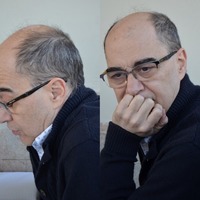









Uploads
Early Modern Natural History & Medicine by José Pardo-Tomás
Biblioteca Marriana in Venice. Eleven of the 1,028 plant drawings contained in their
five volumes stand out for their notable stylistic differences from the rest. The
authors advance the hypothesis that these eleven drawings derive/ram the work of
indigenous scribe-artists in the Valley of Mexico. In tracing the various series of
copies of them that circulated between New Spain, the Iberian peninsula and Italy,
they highlight the important role played in the production and transportation of
copies by Marcantonio Da Mula (1506-1572), and suggest the Spanish nobleman
Diego Hurtado de Mendoza (c.1503 - 1575) as the link between the Spanish court and
Michiel's native Venice.
El trabajo parte de la hipótesis de que el archipiélago de las Filipinas, territorio colonizado desde la Nueva España, sirvió de experiencia, acúmulo, memoria y práctica para la colonización novohispana de otros territorios, señaladamente el Septentrión y las Californias. Si bien los jesuitas hegemonizaron la voz misional-colonizadora en esos territorios (Filipinas primero, el Norte después), antes hubo otros estilos, formas y maneras de escribir la historia natural que los jesuitas conocieron, aprendieron y, finalmente, se apropiaron y adaptaron. Trataremos de analizar uno de los primeros textos que plantean una forma de escribir la historia natural de las Filipinas, Sucesos de las Islas Filipinas, de Antonio de Morga (publicada en México, en 1609, pero escrita entre 1595 y 1603) para compararla con la primera historia natural de las Filipinas hecha por un jesuita, la de Pedro Chirino, publicada en Roma, en 1604.
RIVISTA STORICA ITALIANA, 129 (2) 2017: 417-456
Abstract: In 1555 Spanish physician and naturalist Andres Laguna (1511?-1559) published his commented Spanish translation of Disocoride's Materia medica which he addressed to prince Philip who was about to be crowned King of Spain. The work quickly became an essential reference, even outside Spain, and contributed to the circulation of natural and medical knowledge in the late Renaissance while being reissued numerous times. Starting from an examination of the material and intellectual conditions surrounding the production of this work, our article reflects on the development of a renewed medical and natural knowledge while devoting special attention to how the new information was assimilated and put in circulation in often widely disparate geographic, social and intellectual contexts. Our aim is to examine Laguna's world vision in political and cultural terms and how Laguna generated it by reconstructing the natural productions of the world and their therapeutic use. Our aim is try and capture the image of the Iberian empires that took shape in his translation and commentaries without losing sight of the fact that this occurred in a very particular political context: that of the delicate transfer of power from Charles V to Philip II.
So, the central focus on this occasion will be the distinctive interpretation of the demographic catastrophe which arose among the indigenous population following the arrival of the Europeans, as conquerors and evangelisers. The first three features that come as a surprise when we begin to analyse the texts are the discretionality (not all respondents answered every question, or even in the order laid down in the questionnaire, nor, very often, did they answer the question in the sense intended by those who wrote it), the plurality (there is a wide range of explanations, rhetorical devices, views of illness and its causes, etc.) and the originality of many of the replies. The challenge of trying to answer the question of why the indigenous population had been brutally decimated by illness was posed, firstly, to those responsible for compiling the responses to the questionnaire: corregidores (local governors), alcaldes mayores (local judges), escribanos (notaries), friars, priests and interpreters, in the first instance. Some of them abandoned at the outset any attempt to formulate their own response, making evasive replies or bluntly stating “not known”. Others, by contrast, took up the challenge directly and offer us a statement which in some cases is quite original but in others sticks firmly to a script marked by the most hackneyed clichés of the “conqueror”. Finally, some felt it necessary to leave room for other voices, including those of the representatives of the indigenous communities. However distant, muffled and mediated these voices may be as transmitted to us in the document, they are an indispensable part of the medical culture of New Spain. The plurality of voices, the wide range of explanations, the wealth of opinions and attitudes shown by these responses are a long way from that image of the colonial world as a passive or receptive territory, resistant or assimilated, but always dependent. On the contrary, it is clear that the disparate inhabitants of the colony played a part in forming the opinions and attitudes of their colonial masters.
Biblioteca Marriana in Venice. Eleven of the 1,028 plant drawings contained in their
five volumes stand out for their notable stylistic differences from the rest. The
authors advance the hypothesis that these eleven drawings derive/ram the work of
indigenous scribe-artists in the Valley of Mexico. In tracing the various series of
copies of them that circulated between New Spain, the Iberian peninsula and Italy,
they highlight the important role played in the production and transportation of
copies by Marcantonio Da Mula (1506-1572), and suggest the Spanish nobleman
Diego Hurtado de Mendoza (c.1503 - 1575) as the link between the Spanish court and
Michiel's native Venice.
El trabajo parte de la hipótesis de que el archipiélago de las Filipinas, territorio colonizado desde la Nueva España, sirvió de experiencia, acúmulo, memoria y práctica para la colonización novohispana de otros territorios, señaladamente el Septentrión y las Californias. Si bien los jesuitas hegemonizaron la voz misional-colonizadora en esos territorios (Filipinas primero, el Norte después), antes hubo otros estilos, formas y maneras de escribir la historia natural que los jesuitas conocieron, aprendieron y, finalmente, se apropiaron y adaptaron. Trataremos de analizar uno de los primeros textos que plantean una forma de escribir la historia natural de las Filipinas, Sucesos de las Islas Filipinas, de Antonio de Morga (publicada en México, en 1609, pero escrita entre 1595 y 1603) para compararla con la primera historia natural de las Filipinas hecha por un jesuita, la de Pedro Chirino, publicada en Roma, en 1604.
RIVISTA STORICA ITALIANA, 129 (2) 2017: 417-456
Abstract: In 1555 Spanish physician and naturalist Andres Laguna (1511?-1559) published his commented Spanish translation of Disocoride's Materia medica which he addressed to prince Philip who was about to be crowned King of Spain. The work quickly became an essential reference, even outside Spain, and contributed to the circulation of natural and medical knowledge in the late Renaissance while being reissued numerous times. Starting from an examination of the material and intellectual conditions surrounding the production of this work, our article reflects on the development of a renewed medical and natural knowledge while devoting special attention to how the new information was assimilated and put in circulation in often widely disparate geographic, social and intellectual contexts. Our aim is to examine Laguna's world vision in political and cultural terms and how Laguna generated it by reconstructing the natural productions of the world and their therapeutic use. Our aim is try and capture the image of the Iberian empires that took shape in his translation and commentaries without losing sight of the fact that this occurred in a very particular political context: that of the delicate transfer of power from Charles V to Philip II.
So, the central focus on this occasion will be the distinctive interpretation of the demographic catastrophe which arose among the indigenous population following the arrival of the Europeans, as conquerors and evangelisers. The first three features that come as a surprise when we begin to analyse the texts are the discretionality (not all respondents answered every question, or even in the order laid down in the questionnaire, nor, very often, did they answer the question in the sense intended by those who wrote it), the plurality (there is a wide range of explanations, rhetorical devices, views of illness and its causes, etc.) and the originality of many of the replies. The challenge of trying to answer the question of why the indigenous population had been brutally decimated by illness was posed, firstly, to those responsible for compiling the responses to the questionnaire: corregidores (local governors), alcaldes mayores (local judges), escribanos (notaries), friars, priests and interpreters, in the first instance. Some of them abandoned at the outset any attempt to formulate their own response, making evasive replies or bluntly stating “not known”. Others, by contrast, took up the challenge directly and offer us a statement which in some cases is quite original but in others sticks firmly to a script marked by the most hackneyed clichés of the “conqueror”. Finally, some felt it necessary to leave room for other voices, including those of the representatives of the indigenous communities. However distant, muffled and mediated these voices may be as transmitted to us in the document, they are an indispensable part of the medical culture of New Spain. The plurality of voices, the wide range of explanations, the wealth of opinions and attitudes shown by these responses are a long way from that image of the colonial world as a passive or receptive territory, resistant or assimilated, but always dependent. On the contrary, it is clear that the disparate inhabitants of the colony played a part in forming the opinions and attitudes of their colonial masters.
Universidad de la República, cuyo edificio data de 1911, existe una
colección de ceras embriológicas, magníficamente conservada, aunque hasta ahora no ha sido debidamente estudiada desde el punto de vista histórico.
antiquarian. Mr Arellano tried to sell the collection, an operation that involved the division of the collection into two parts. The ‘theatrical’ part was sold to the city of Barcelona and the ‘medical’ part was acquired by Leo Coolen, a Belgian collector. The third part of the chapter focuses on the new uses of the anatomical collection, from Coolen’s Wunderkammern to the exhibition contexts, public and private, devised or supported by the new owner.
Disaster narratives in Early Modern Naples. Politics, communi- cation and culture, Domenico Cecere, Chiara de Caprio, Lorenza Gianfrancesco, Pasquale Pal- meri, eds., Viella, Roma, 2018, 262 p. ISBN 978-88-6728-645-4.
Historiar las catástrofes, María Dolores Lorenzo, Miguel Rodríguez y David Marcilhacy, coords. Universidad Nacional Autónoma de México, Instituto de Investigaciones Históricas, Sorbonne Université, Centre de Recherches Interdisciplinaires sur les Mondes Ibériques Contempo- rains, México, 2019. 384 p. ISBN 978-607-30-2583-6. Disponible en línea: https://www.historicas.unam.mx/publicaciones/publicadigital/ libros/709/historiar_catastrofes.html
This exploratory workshop has been designed with a two-fold purpose. On the one hand, it aims to substantially contribute to the conceptualisation and design of a ground-breaking digital humanities project dedicated to the so-called Tesoro Messicano (Mexican Treasury) and its multiple production and circulation contexts between the old and new worlds. On the other hand, it introduces a series of working meetings that are expected to boost a highly innovative research agenda focusing on the complex relationships between cultural heritage and history. Thus, the potential of the concept of paper-heritage-making will be analysed, and thoroughly discussed at the analytical crossroad between a historical issue (heritage as a process), a conceptual resource (digital), and an impact strategy oriented towards the circulation of knowledge and know-how, interdisciplinary training-through research, and social participation. This multilevel approach will continuously return to Rome, meant as both a trans-local urban space, opened to further comparison and entanglement, and a complex global dimension materialised through scholarly, diplomatic and missionary networks as well as multiple contexts of plural confessional cultures.
The workshop argues for the Mexican Treasury as a paper-monument, i.e. a complex artefact made up of strict interconnections of textual, visual and material dimensions, fostering shifting entanglements of knowledge practices, multiple searches for legitimation, political claims, and competing memory production. As is well known, the Rerum Medicarum Novae Hispaniae Thesaurus was published in 1651 as the late result of Francisco Hernández’s complex medical and natural-historical legacy. Though many actors participating in its plural and long-lasting making regarded this “monstrous” in-folio as a scientific failure, it was nevertheless published in Rome. While the Papal city was losing its political centrality in Europe and renegotiating its universal aurea, the Mexican Treasury was resumed, and a complex bulk of knowledge on the natural American world was made public after lengthy exposure to different appropriations, re-significations and sedimentations, thus reinventing spatial and temporal junctures with the earlier past.
In the last years, the apparently increasing scholarly attention towards such a “born-old” natural history of the new worlds invites us to reflect on its multiple material dimensions, plural contexts, and different uses. By opening up a collective reflection on this paper-monument, the time is now ripe to thematise the Papal city as a complex urban space of paper sedimentation, artefact entrapments, as well as a trans-local communicative arena where knowledge-making and competing processes of value-creation, resignification, oblivion and destruction, continuously renegotiate the future.